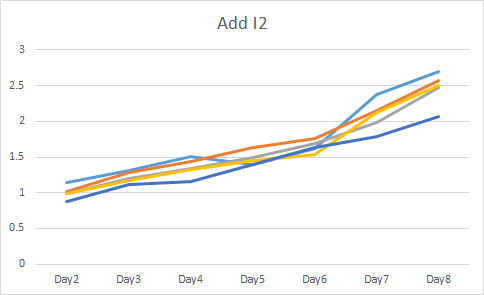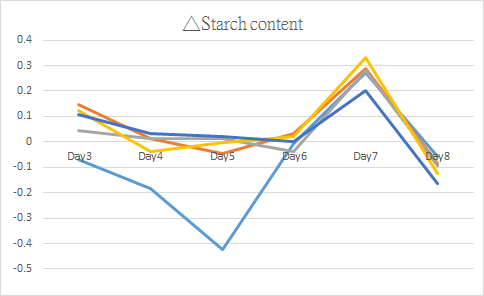Difference between revisions of "Part:BBa K2350022"
BeagleLover (Talk | contribs) |
Hibarihweek (Talk | contribs) |
||
| Line 1: | Line 1: | ||
== Part description == | == Part description == | ||
Zeaxanthin belongs to carotenoid family and is widely found in the nature. It is also a natural color making corns, carrots and marigolds yellow. Moreover, zeaxanthin is an essential nutrient substance to human’s eyes, and some healthy supplements are made of it. Most of green plants produce zeaxanthin as an intermediate in carotenoid pathway. However, some cyanobacteria lack some genes and cannot produce zeaxanthin, such as Synechococcus elongatus PCC 7942. PCC7942 lacks only one gene making zeaxanthin, that is beta-carotene hydroxylase (CrtZ). To make Synechococcus elongatus PCC 7942 produce zeaxanthin, we construct a plasmid BBa_K2320022 under the control of PrbcL. After the expression of CrtZ, PCC 7942 can then be yellow. | Zeaxanthin belongs to carotenoid family and is widely found in the nature. It is also a natural color making corns, carrots and marigolds yellow. Moreover, zeaxanthin is an essential nutrient substance to human’s eyes, and some healthy supplements are made of it. Most of green plants produce zeaxanthin as an intermediate in carotenoid pathway. However, some cyanobacteria lack some genes and cannot produce zeaxanthin, such as Synechococcus elongatus PCC 7942. PCC7942 lacks only one gene making zeaxanthin, that is beta-carotene hydroxylase (CrtZ). To make Synechococcus elongatus PCC 7942 produce zeaxanthin, we construct a plasmid BBa_K2320022 under the control of PrbcL. After the expression of CrtZ, PCC 7942 can then be yellow. | ||
| + | |||
| + | And the crtZ what we use was a part released in iGEM (BBa_I742158) .We have successfully construct this part on our special design backbone pPIGBACK so that it can express in our microalgae and result in yellow microalgae. | ||
== Details == | == Details == | ||
Revision as of 11:40, 25 October 2017
Part description
Zeaxanthin belongs to carotenoid family and is widely found in the nature. It is also a natural color making corns, carrots and marigolds yellow. Moreover, zeaxanthin is an essential nutrient substance to human’s eyes, and some healthy supplements are made of it. Most of green plants produce zeaxanthin as an intermediate in carotenoid pathway. However, some cyanobacteria lack some genes and cannot produce zeaxanthin, such as Synechococcus elongatus PCC 7942. PCC7942 lacks only one gene making zeaxanthin, that is beta-carotene hydroxylase (CrtZ). To make Synechococcus elongatus PCC 7942 produce zeaxanthin, we construct a plasmid BBa_K2320022 under the control of PrbcL. After the expression of CrtZ, PCC 7942 can then be yellow.
And the crtZ what we use was a part released in iGEM (BBa_I742158) .We have successfully construct this part on our special design backbone pPIGBACK so that it can express in our microalgae and result in yellow microalgae.
Details
1. We studied Professor Chuan-Hsiung Chang’s paper(Energy Environ. Sci., 2012, 5, 8318: Enhancing CO2 bio-mitigation by genetic engineering of cyanobacteria) and decided to construct pigment plasmid with the same promotor. The natural ribosome binding site is also referred to it.
2. The intrinsic promoter of Rubisco large subunit (PrbcL) can overexpress foreign genes in the cyanobacteria. Many plants’ protens in photosynthesis are under regulation of PrbcL. And the high activity to express foreign genes has been provrn.
3. CrtZ from Pantoea ananatis is a coding sequence of igem released part (BBa_I742158). It can lead to zeaxanthin and astaxanthin. However, the wild type Synechococcus elongatus PCC 7942 lacks of it and cannot make zeaxanthin naturally.
Result


Figure1 Figure2
The left one is wild type Synechococcus elongatus PCC 7942, the right one was transforment with BBa_K2320022. Obviously, the right one was more yellow than the left one. It proved that CrtZ was successfully transformed to PCC7942 and lead to zeaxantin.


Figure3 Figure4
Figure3 is cell number. Figure4 is the starch content.


Figure5 Figure6
Figure5 is starch content per cell. Figure6 is delta starch content compared with days. On Figure5 and Figure6, the starch of transforment are more than wild type, and proved that photosynthesis of transforment was more efficient than wild type.
pPIGBACK-PrbcL-CrtZ
- 10COMPATIBLE WITH RFC[10]
- 12COMPATIBLE WITH RFC[12]
- 21COMPATIBLE WITH RFC[21]
- 23COMPATIBLE WITH RFC[23]
- 25COMPATIBLE WITH RFC[25]
- 1000COMPATIBLE WITH RFC[1000]
